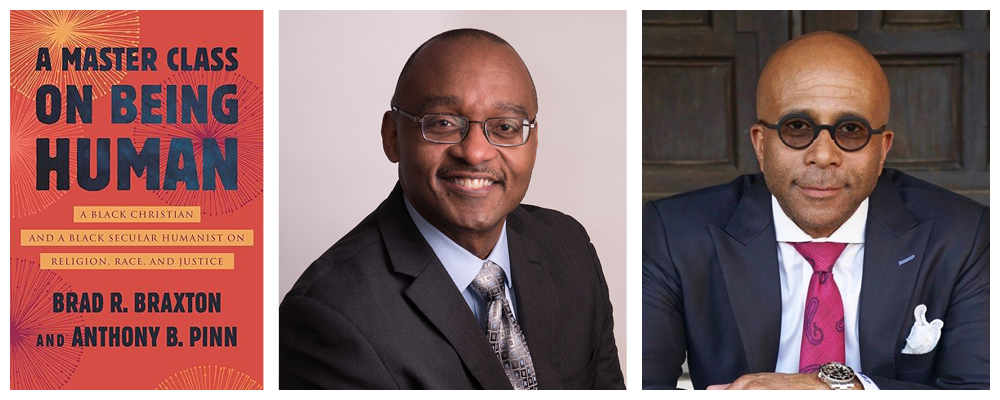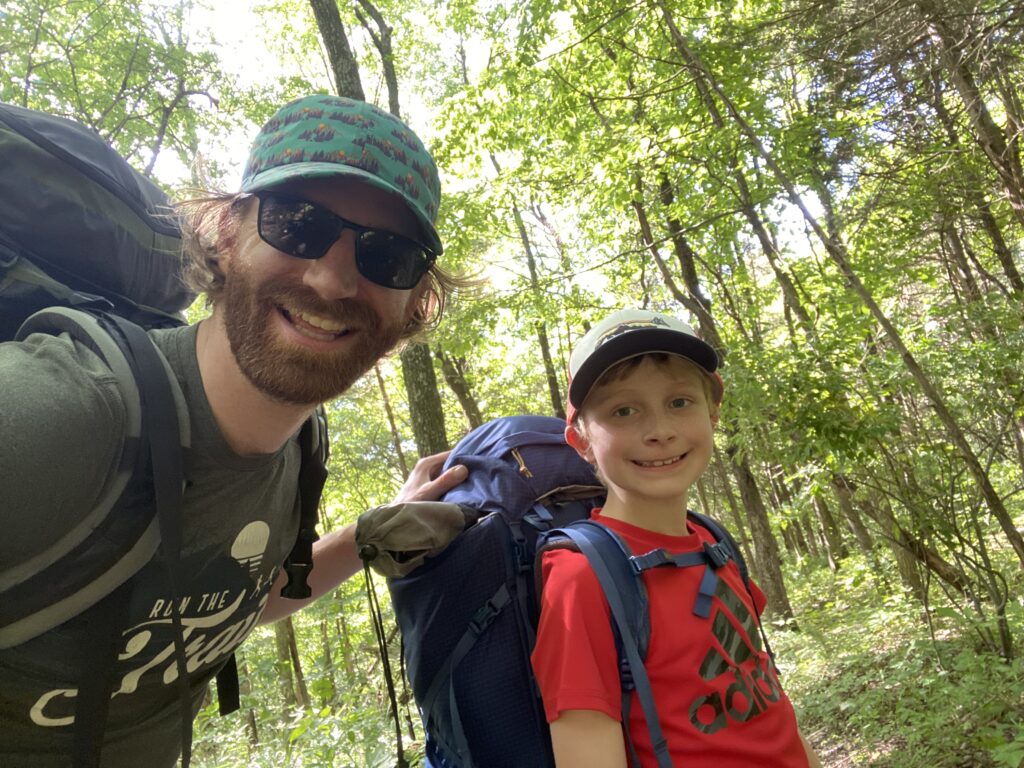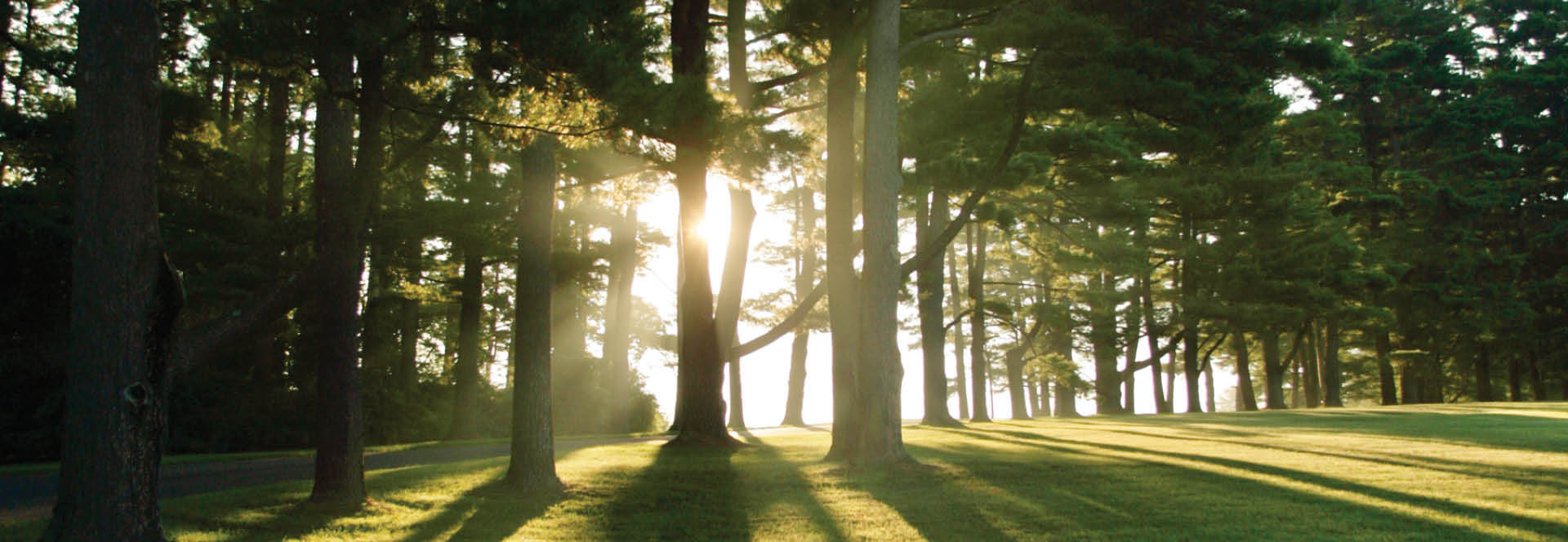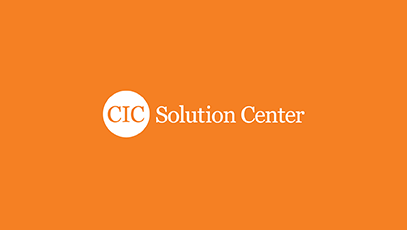A Master Class on Being Human by Brad R. Braxton and Anthony B. Pinn
Reviewed by Daniel Meyers, NetVUE Online Community Coordinator
With its ambitious title, A Master Class on Being Human, you might wonder if this book lives up to such a claim. While readers will not learn all that they need to know to be a good human being in just two hundred pages, they will fully encounter one elusive aspect of the human project: dialogue across difference. Rev. Brad R. Braxton, president and professor of public theology at Chicago Theological Seminary, is a Christian committed to the Black Church’s potential to promote justice in our world. Anthony B. Pinn, Agnes Cullen Arnold Distinguished Professor of Humanities and professor of religion at Rice University, identifies as an atheist who is committed to the same projects of racial justice Braxton pursues, though he deeply disagrees on the methods for achieving such aims. For anyone in higher education who has experienced the need for dialogue across different perspectives and who values inclusion and belonging, this book will be deeply engaging and practical, not only for what it says but also for how it is written.

The project emerged out of the initial wave of the COVID-19 pandemic in 2020. Shortly into the writing process demonstrations for racial justice in the wake of the murders of George Floyd and Breyonna Taylor were happening across the country. Out of that context, the two authors shared emails back and forth, a passionate exchange that became the basis of the book. For each predetermined topic, one of the authors opens with a short reflection on the matter and the other responds, staging a rigorous and critical dialogue between two gracious and curious thinkers. As Braxton and Ping explore their shared understanding of racial justice, they hold each another accountable for their divergent views on the role of faith, the church, human potential, and social movements in this struggle. As their conversation unfolds, they address the meaning and function of religion, the public role religion does (or does not) have, the place of “nones” in our society, especially within the Black community, theological and ethical questions of suffering and moral evil, and a specific discourse on the scourge of violence against Black bodies in America and the potential for movements like Black Lives Matter.
Intellectually, their discussion is fascinating. Perhaps more striking, it models respectful discourse in powerful ways. In this field, theoretical applications of such issues abound, but it is rare to find a book where the practical application is the text itself. As a model of such application, this volume could spark many potential assignments and writing prompts that readers could use with students as they consider their values, the pursuit of social goods, the intersection of faith and action, and what theories of justice they hold.
Of particular value is the focus of prompt five, the authors reflect on how best to talk about the future. As they wrestle with the idea of hope, they consider its usefulness as a framework for social change. For Pinn, hope is a secular word that carries similar assumptions like the word faith; neither idea is grounded in historical evidence for Pinn, or presented by an authority to which he is committed. While Braxton argues for a theological arc of hope, Pinn pushes back and advocates for the language of “perseverance or persistence” as the way to frame a future that pushes against injustice (128). He goes on to explore how these words anchor one’s actions in “the arena of history lived” (128). Talking about the future with young people today requires a magical suspension of disbelief, given the uncertainties we face five years from now, let alone ten. Pinn provides a language that is used to argue for actionable steps. Braxton provides a commitment to the potential good born out of uncertainty. Both perspectives offer powerful ideas for young folks to consider as they lean into their own uncertainties, yet still need tangible anchors as they pursue justice.
If you’re looking to be stimulated intellectually, or are in search of a text that models productive disagreement in the pursuit of learning, I highly recommend this book. It provides creative ways to ask students to write, communicate, and engage across difference, as well as adding new language to vocational conversations about unknown futures. Simply put, if you think “diverse groups of people urgently need to cultivate the ability to communicate with each other in ways that move beyond winning at all costs” (xii), then you will not be disappointed. This book might not teach you fully how to be human, but I wager it will go far in moving all of us closer to being better humans in a world of difference.
Closing Reflection: Planning for Less Structure – Lessons from Backpacking
By Daniel Meyers, NetVUE Online Network Coordinator
This past summer, I took my eight-year-old son on his first backpacking trip. We went for three nights, and he carried his clothes, sleeping bag and other equipment. The trip represented for me a vocational milestone as a father. I have always imagined myself as a dad who takes his kids into the wilderness and introduces them to the joys of backpacking—slapping at mosquitoes, waking up stiff from a cold ground sleep, and scraping the remains of freeze-dried food out of an aluminum pot. I love it all. And I want my kids to love it, too. As we set out, my spirit was vocationally fertile, and my soul-soil, tilled . I was ready to plant lifelong memories—a father–son moment for the scrapbook. We did make some of those memories, but something much more important happened, something that will instruct my work on a campus as I return this fall.

On the second day of our hike, we had lunch on a ridge that looked out over miles and miles of green forest, listening to the pulsating hum of the cicadas. Handing me the bag of dried mangoes, my son asked, “What does the ‘g’ mean?” This particular ‘g’ was printed on the package and stood for “grams,” as in how many grams of mango we had been packing for two days. Curious about the quality of our local public schools, I asked him if he had ever heard of the metric system. He had not. I did my best to explain the metric system to him and ended my “short lecture”—his words—by saying, “But we don’t use the metric system here because America always thinks its special and does things differently than the rest of the world.” A slight editorial, I will admit, but it was a quip meant for just me, the only adult on the ridge, a brief lapse for the ever-objective educator.
He picked up on my comment right away and shot back with his tried-and-true conversational weapon of choice: “Why?” A three-hour conversation transpired about … everything. We talked about science, history, our relationship to others in society, the role of democracy, the role of education, and, most powerfully, ethics. The memories I thought we might make on this trip came in their own way, but I never expected to experience the joy of strolling behind my son as he traipsed over logs and rocks in the Illinois wilderness and exploring with him the boundaries of self and other, action and stillness, histories untold and present moments unfolding. How did this happen?
It happened because in the structure of a backpacking trip, there is no structure: we had nowhere to be, no requirements of our day, no obligations to meet. All I had to do was make sure we got back to the tent and that we had made some macaroni before the sun went down. That freedom allowed for a vocational moment for me and a moment of meaning for him, for which neither of us could have planned.
Backpacking couldn’t be further from the realities of my life on campus. There are very few mosquitoes, I typically don’t sleep on the floor while there, and most of the food has never been dehydrated. On campus, every hour is blocked out in my Outlook calendar with class time, facilitation opportunities, meetings, coffee convos—all of which I value and enjoy. But that approach to time does not allow for education to happen in unstructured moments. It’s not only me; students and colleagues alike are traversing back-to-back schedules all day. The result is that we have no time for the spontaneous unfolding of a meaningful moment. We can’t remedy this challenge by guarding an hour here or there for unstructured moments without an agenda. For students to learn best and to be reminded of our calling, we need to reorient ourselves to time, so that there is room for the unscripted and unexpected throughout all phases of our hyper-structured and scheduled lives. In fact, I might make more of a difference in the lives of others by having the wiggle room to stay in the conversation longer than planned, or by accompanying a student across campus to their next building, or by hanging on the zoom call for a bit after others leave.
I’m not suggesting that we should replicate a backpacker’s lifestyle within the pace of higher education. That would be silly. But we should notice that often the most powerful learning moments happen without the structure of a classroom or the focus of an agenda. Recasting my attitude toward time so that there is room for these moments might allow me not only to ignite others’ meaningful reflection, but also to notice my own more often. It’s a message I needed to hear, and one I hope readers will find compelling. As we begin this academic year, I encourage all of us to avoid scheduling every minute of our days, so that we can be present to the unexpected moments of learning that will come our way and take notice of the difference that an unscheduled moment might make.

To report a technical problem with the website, or to offer suggestions for navigation and content issues, please contact Alex Stephenson, NetVUE communications coordinator, at astephenson@cic.edu.


